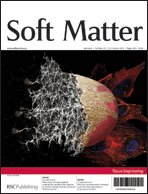In this paper we report a novel thermogelling matrix that can be assembled in the presence of cells, support cell growth, and revert to a free-flowing colloidal suspension in simple and rapid stages. These reversibly gelling suspensions are prepared from a thermoresponsive component, poly(polyethylene glycol methacrylate ethyl ether) (polyPEGMA-EE246) together with polycaprolactone microparticles. Aqueous dispersions of these materials are free flowing at temperatures below 20 °C but switch reversibly over periods of ∼1 minute to form space filling gels at body temperature (37 °C). The viscoelastic properties of the formed gels can be tuned by temperature and composition, enabling these gels to be tailored for specific biomedical applications. We exemplify this by repeated cycles of sub-culture of fibroblast cells in the gels with the maintenance of viability. As only a temperature change is required to liquefy the gel, subculture of cells was performed without the need for enzymatic or physical cell removal from a substrate. The combination of ease of preparation, the potential for scale-up and positive cell response make these microparticle gels promising as a new class of materials for applications in cell culture, as supports for tissue growth and in cell delivery systems.

You have access to this article
 Please wait while we load your content...
Something went wrong. Try again?
Please wait while we load your content...
Something went wrong. Try again?


 Please wait while we load your content...
Please wait while we load your content...